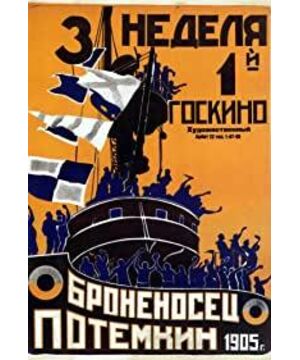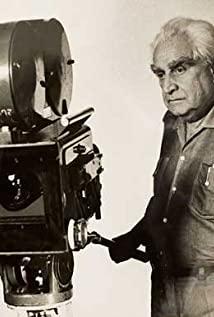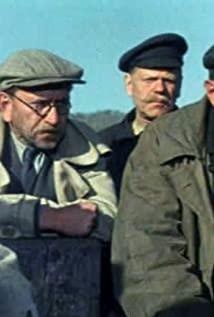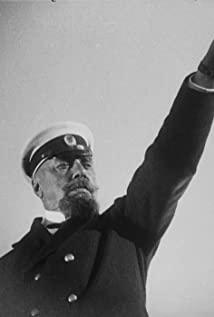Analysis of the editing concept of "Battleship Potemkin"
"Battleship Potemkin" is an important milestone in the history of world cinema. With the story of the people's struggle against the grand historical background, the abstract story time concept and the montage editing skills with profound metaphorical meanings, it adds a strong color to the development of film art. One stroke, making film art to a new world of montage art. "Battleship Potemkin" has made a major breakthrough in the narrative link of the film, using montage to enrich the movie-watching aesthetic experience and psychological experience brought to people by the film, and at the same time, it is also constantly opening up new paths for the development of montage theory, for love Sunstein's director's personal film style laid the groundwork.
The editing of the shots makes one plus one greater than two, which is the magic of montage. In the 1920s, Soviet film pioneers started theoretical-based film research, the core of which was the exploration of the relationship between editing and film rhythm, time and space, and thematic ideas. From this they studied the essence of film art - montage theory. Eisenstein innovatively invented theories such as "juggling montage" and "parallel montage" on the basis of Kurishov's montage experiment, and wanted to attract the audience's attention through a powerful visual impact. He cuts two or more shots with strong opposite meanings together, enhances the audience's expectation, makes the audience have a strong emotional impact, and makes the cut movie pictures have new and implicit metaphors. Expresses "shocked stimulus".
The entire film divides the story of revolution and resistance into five parts: man and maggots, rear deck drama, revenge for the dead, Odessa stairs and preparation for battle. Each part is closely linked. Step by step the revolution against the tyrannical rule of the Tsar is carried out step by step with the delicate structure and epic style of the classical tragedy. In each part, the tension of the revolutionary era and the panic of the people in a specific historical period are carefully portrayed. The plot of the film is run through strong contradictions and detailed descriptions under montage editing. The cutting and combination of these shots make the performance far beyond the original meaning and effect of the shots, and bring more detailed plot descriptions to the audience. Strong emotional impact.
In "Man and Maggots", in order to show the process of cooking carrion for the crew to eat, the director first used a close-up to show the soldiers scrubbing the dishes and then immediately interspersed with the picture of the boiling hot soup cooking the meat, and then added the soldiers in an orderly manner A picture of queuing up to enter the canteen to place tableware. This series of pictures makes people naturally feel that the soldiers are about to eat the piece of carrion full of maggots just now. The director transfers the task of conveying the storyline to the audience himself, completing the role of parallel montage here. In the struggle between the soldiers and the officers because of the carrion, the soldiers finally rose up to resist and bravely faced the oppressive rule. In the picture, the fighting and confrontation between the soldiers and the commander continued to appear, and at the same time, there were pictures of the soldiers stepping on the piano and candles in the cabin. In the tense war years, there are still piano instruments in the warships that represent the needs of the upper class to meet the needs of music and art, which is out of tune with the urgent current environment. The picture of soldiers stepping on the piano is inserted into the fighting picture, which reflects their revolutionary enthusiasm and their courage to fight without fear of power. It is also a criticism of the greed and corruption of the upper-level reactionary ruling class. As the red flag was raised, the revolutionary uprising of the battleship Potemkin was successful. The story gradually reaches its climax.
"Stairs of Odessa" is the climax of the whole film. The fast cutting of the picture, the flexible and appropriate cutting content, and the perfect coordination of the background music make the film fragment of the Odessa Staircase a subtle application of montage art in the history of film. example. At the moment when the warm atmosphere of revolutionary unity was reaching its climax, there was a sudden burst of gunfire, and the repression of the reactionary tsarist authorities began. The crowd climbed down the stairs in a panic, and the soundtrack quickly accelerated from its original lightness and joy to set off the tense situation. The scene space is cut by the lens space. The image of soldiers going downstairs and slaughtering neatly with guns and the image of the refugees fleeing in a hurry are cut at high speed. The intersection of the two violently contradictory and conflicting images shows the disparity in combat power. The visual effect of the film brings a powerful shock. The multi-angle combination of front, back and side shows a more comprehensive panorama of the carnage. The mother ran away with her son, but after the son was knocked down by the crowd and shot, the close-up of the mother's extreme panic and anger was interleaved with the crowd rushing downstairs to flee and the soldiers shooting, medium shot, panoramic view, The combination of close-ups makes the content of the picture rich and comprehensive, and also brings a strong visual impact to the audience. The sadness conveyed to the audience by the close-up of the mother’s despair and pain is also conveyed to the chaotic masses of the film, who feel it as well. So the mother stood up and carried the child against the current, and bravely marched towards the brutal soldier. The soldier moved forward mercilessly. The two pictures intersected each other. In the end, the mother holding the child and the soldier holding the gun finally appeared in the same picture. He fell to the ground, but the massacre continued. In the segment of the Odessa Stairs, a large number of quick-cut shots spliced together close-up shots of soldiers massacred, civilians fleeing, and periodic main characters. The scene space was cut, reorganized, and integrated into a messy, shattered , the turbulent massacre space, and the continuous action of repeated reorganization from multiple angles make the film time abstract. The images of the soldiers marching downstairs and slaughtering appear repeatedly, giving the audience a feeling that the slaughter seems to be endless, and the brutal and bloody rule never seems to have reached an end, which enhances the audience’s visual and psychological experience and deepens the film’s theme of tragedy. The fast cuts of the three stone lions sleeping, getting up, and awakening seem to have nothing to do with the plot of the movie, but actually represent the awakening of the people's consciousness of resistance. They embarked on the path of rebellion against brutal rule, toward revolution, toward the light.
"Battleship Potemkin" closely focuses on the theme of revolution, and innovatively uses montage editing art to guide the film's narrative rhythm, regulate the audience's viewing psychology, and capture the audience's viewing emotions in a more nuanced way. Eisenstein pioneered and innovated the techniques of film narration and opened up a new world for film art. His montage application theory is timeless and has become a classic praised by all the masters of the past, leaving an indelible mark in the history of film. footprint.
View more about Battleship Potemkin reviews










